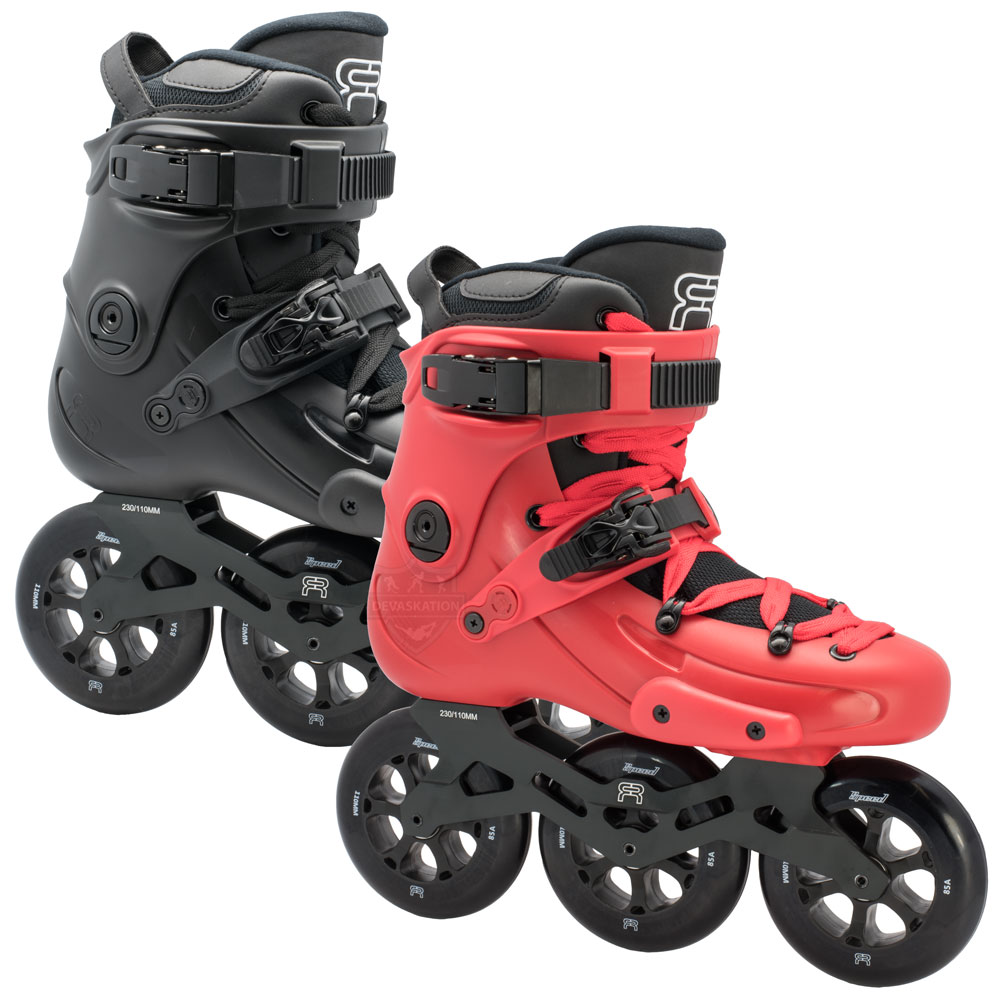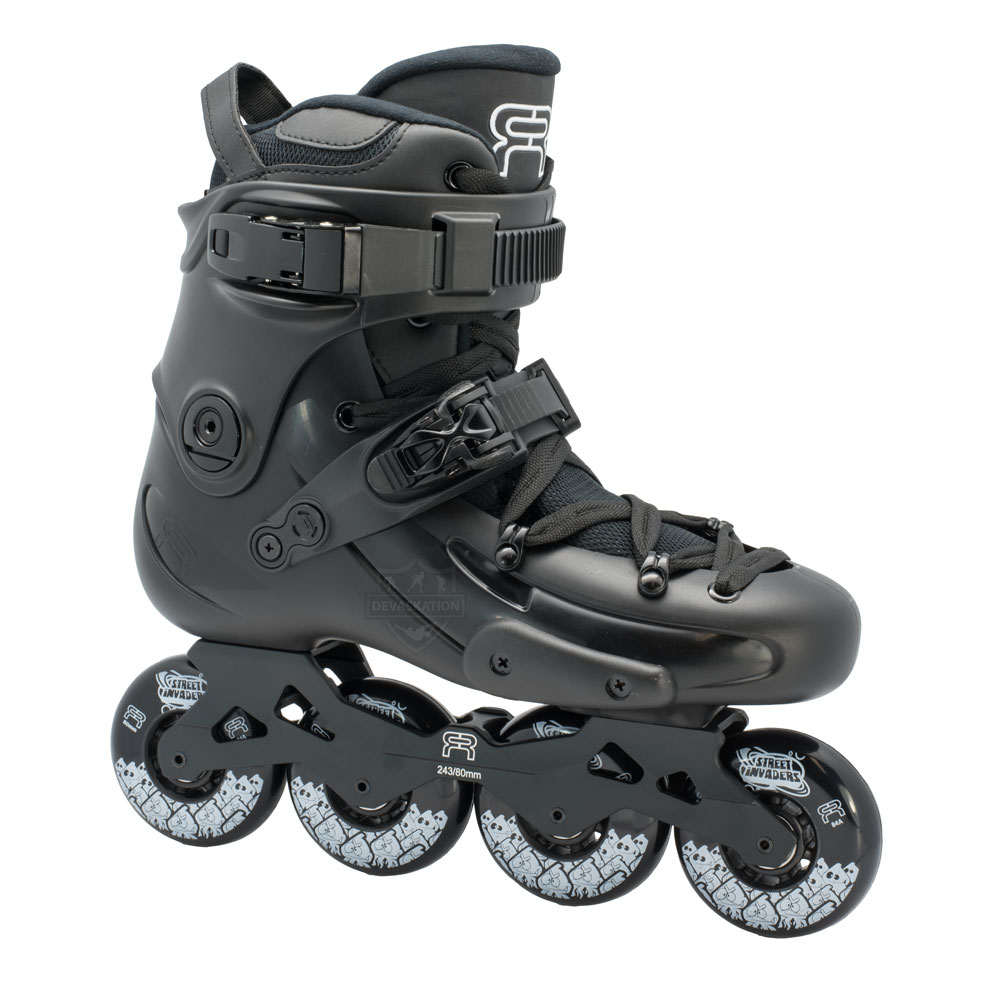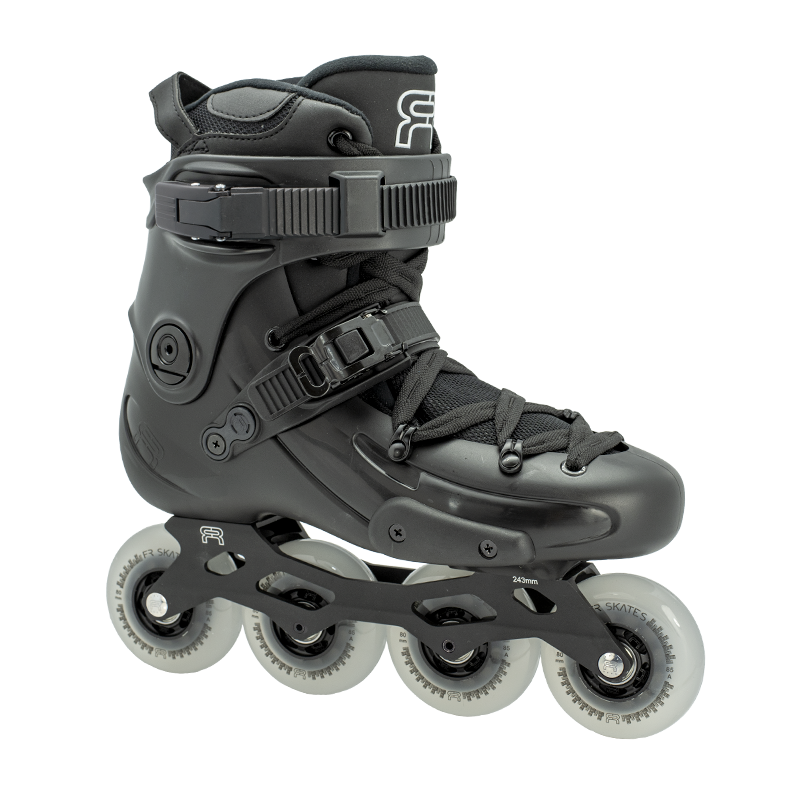
Do I get 3 wheel or 4 wheel skates? What is the difference in the number of inline wheels on skates? Does it really make that big of a difference? Aren’t more wheels always better? Aren’t less wheels always cheaper? These are all questions that we get asked about inline skates very often. There are benefits to all different options for the amount of wheels on your inline skates. The first thing we ask our customers when they need help deciding is “what kind of skating do you do?” This one question narrows down a lot of options for what will work best for each person. Not sure what kind of skating you’d like to do? Check out our What Are Inline Skates Article for more details on different skating styles and parts! Not only can we then recommend how many wheels you should get for that type of skating, we can also tell you what size inline wheels to get and the best options for inline bearings as well!
The main differences between 3-wheel and 4-wheel inline skates other than the number and size of the wheels is what type of skating they are typically used for. They also vary in their configuration. Here are some specific differences:
- Number of wheels: 3-wheel inline skates have three wheels, while 4-wheel inline skates have four wheels.
- Wheel size: 3-wheel inline skates typically have larger wheels than 4-wheel inline skates, ranging from 100mm to 125mm in diameter. 4-wheel inline skates usually have smaller wheels, ranging from 70mm to 90mm.
- Wheel configuration: 3-wheel inline skates have a triangular wheel configuration, with one wheel at the front and two at the back. This configuration is designed to provide better speed and maneuverability. 4-wheel inline skates have a square wheel configuration, with two wheels at the front and two at the back, which provides more stability and balance.
- Weight: 3-wheel inline skates are generally lighter than 4-wheel inline skates, which can make them easier to maneuver and control.
- Skill level: 3-wheel inline skates are often recommended for intermediate to advanced skaters due to their speed and maneuverability, while 4-wheel inline skates are generally recommended for beginners or those who prefer a more stable, comfortable ride.
Ultimately, the choice between 3-wheel and 4-wheel inline skates comes down to personal preference, skating style, and skill level. Depending on the type of skating you are doing, different benefits will be important to you. We want to know what you think too! If there is something you don’t agree with, or even something you do and just have more thoughts on…let us know so we can share your knowledge with the rest of our awesome customers.
Below are the pros, cons, and our two cents to 3 and 4 wheel inline skates that will help you align the type of skating you are doing with the type of skates, frames, and wheels you need.
3 Wheel |
4 Wheel Flat |
4 Wheel Rockered |
|
Pros |
|
|
|
Cons |
|
|
|
Our 2 Cents |
Many people are upgrading to 3×110 and 3×125 frames. The 125mm wheels would be too big for any 4-wheel setup. They are pleasing to look at and are against the norm of most inline skates. They are also a lot of fun because they get you off the line quicker than a 4-wheel setup and you can whip around super fast while being super agile. 3 wheel setups are also great for kids! The smaller boot needs a smaller frame and the 3 wheel setup allows kids to get the larger wheels to accomplish speed they want. | This setup disperses the weight of a skater over more wheels which maintains the integrity of the wheel while skating. Speed skaters push off with their toes and this setup allows them to do that with 2 wheels on the ground instead of 1. More wheels on the ground while doing crossovers allows for the skater’s full weight to be distributed among more wheels instead of just the one they would have on a 3-wheel setup. It does take a bit longer to get to the higher speed but it is a much higher speed (once you reach it) than the 3-wheel setups. | These skate styles are almost exclusively for slalom and dance style skaters. The rockered frame allows for a center pivot point that can allow for amazing moves in this type of skating. The nimbleness that this frame provides makes for an awesome audience experience when watching these 2 types of skating. There is much less stability in this kind of setup and those who want to slalom or dance skate will need to learn to balance on less wheels so that they may achieve the increased maneuverability they’ll get from the setup. |
Skates You’ll Love |
FR 310 Skate
|
FR – FR1 80 Skate
|
FR – FR2 80 Skate with Rockerable Frame
|
